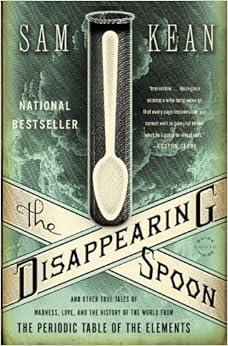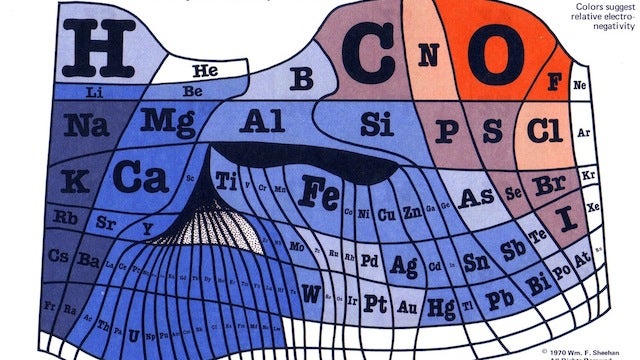 The Disappearing Spoon by Sam Kean explores the periodic table and the stories behind a variety of elements. It made me realize how much I had forgotten from my chemistry classes. Of course, it also made me think about how I learned about chemistry in the first place. My high school chemistry teacher, Ms. Simms, was excellent. She had a number of great illustrative methods to think about things like orbitals and electrons. However, despite her superb teaching, I really struggled with chemistry at the time.
The Disappearing Spoon by Sam Kean explores the periodic table and the stories behind a variety of elements. It made me realize how much I had forgotten from my chemistry classes. Of course, it also made me think about how I learned about chemistry in the first place. My high school chemistry teacher, Ms. Simms, was excellent. She had a number of great illustrative methods to think about things like orbitals and electrons. However, despite her superb teaching, I really struggled with chemistry at the time. My graduate classes in biology always included lots of narratives of the scientific process and how the scientists reached their discoveries. This is a great way to learn about how to think about a problem and how to design experiments properly. It is also an excellent way to learn about science. This book taught me far more about chemistry than I had originally intended.
The story of how the periodic table developed and evolved is a fascinating one. (As an aside, the Radiolab podcast Yellow Fluff did a great story on this as and it serves as a nice complement to sections of this book.) In fact, one of the most interesting stories in The Disappearing Spoon was the biography of Dmitri Mendeleev. Chapter 3 discusses Mendeleev's personal story; my favorite part is how his widowed mother "bundled him on horseback and rode 1200 miles across the snowy Ural mountains to an elite university in Moscow". While that university did not accept Dmitri, he later found a spot at a university in St. Petersburg. Sadly, his mother died shortly after he was enrolled. Mendeleev excelled in school and worked in lots of different chemistry labs. Using this knowledge, he started to organize the elements; the story goes that Mendeleev used to play a sort of chemical solitaire with the elements written on index cards.
 |
| Periodic table according to relative abundance (from io9) |
The book explores other topics including how elements are used in times of war. In Chapter 5, Kean talks about the importance of molybdenum (wolfram, W) in the development of Germany's weapons, which were spiked with wolfram to withstand higher heat, in World War I. This chapter also tells the story of Fritz Haber (another great Radiolab episode) as well as the elements that have fueled the conflict in Congo -- tantalum and niobium, which are commonly used in cell phones and other electronics.
In the end, The Disappearing Spoon, much like Walter White in Breaking Bad, has renewed my appreciation for the periodic table and helped me understand better some of the things I probably learned 20 years ago.
A few related links:
For your viewing/listening pleasure, I present They Might be Giants, Meet the Elements.
The dynamic periodic table. I wish they had this kind of thing when I was in school.
This comment has been removed by a blog administrator.
ReplyDelete